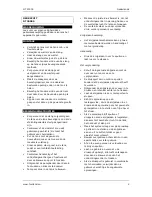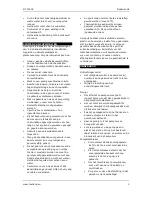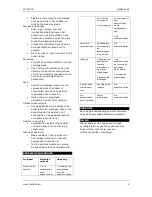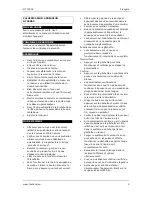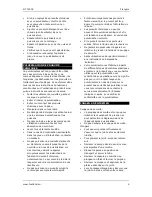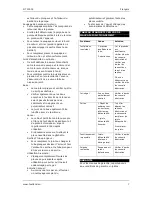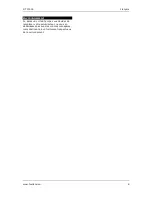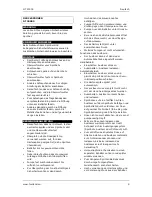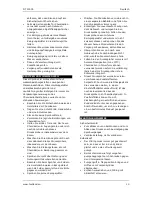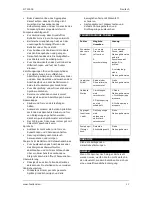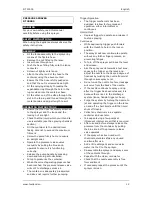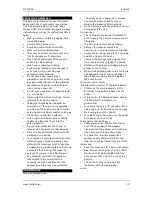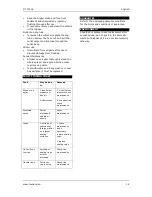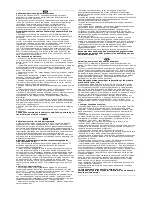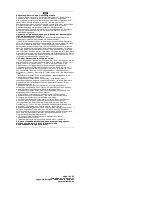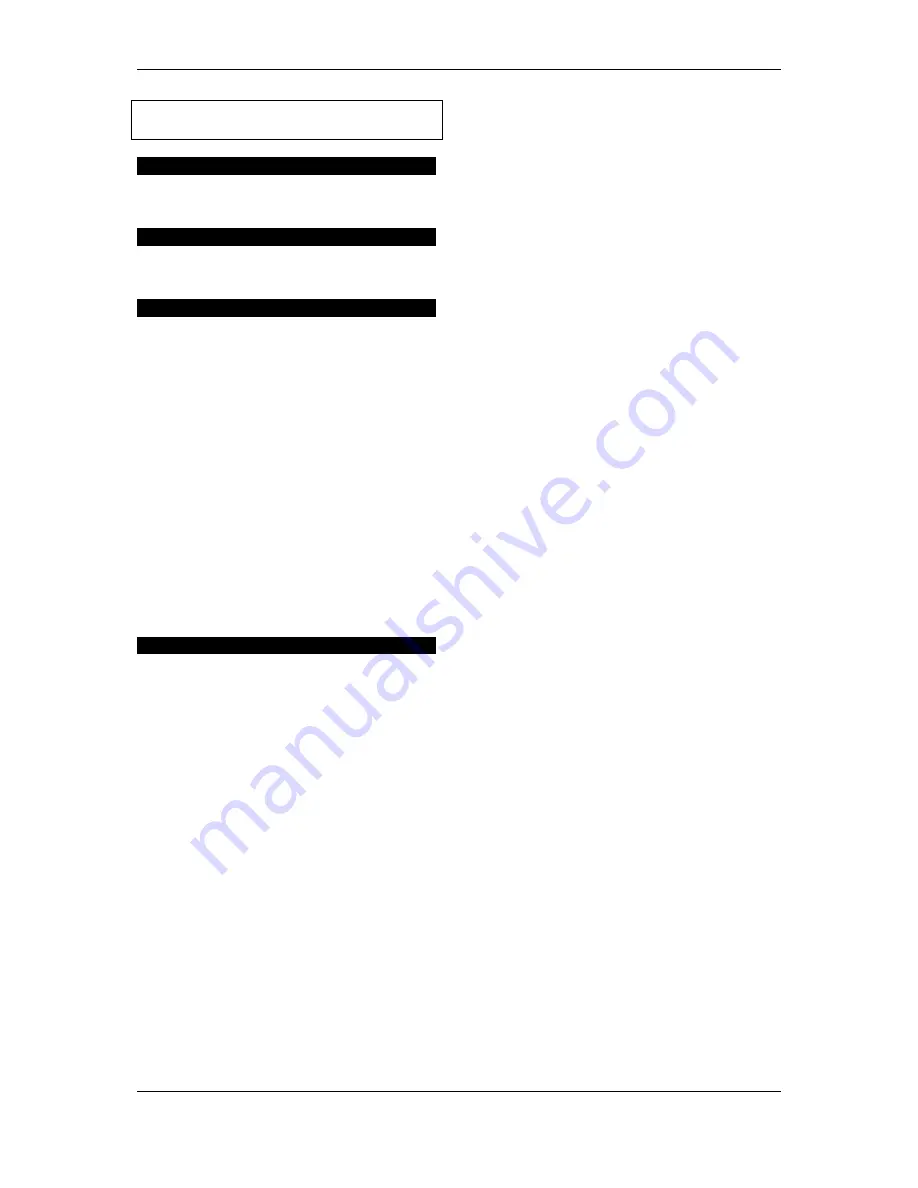
DT 20005
English
www.toolland.eu
12
PRESSURE SPRAYER
DT 20005
WARNING
For your own safety, read this manual
carefully before using this sprayer.
SAFETY INSTRUCTIONS
When using the appliance always observe the
safety instructions.
ASSEMBLY
Fit the lance assembly to the sprayer by
means of the flexible hose.
Remove the nut fitted to the lance.
Insert hose through nut.
Push the hose fitting fully onto the lance
connector.
Screw nut tightly onto lance.
Attach the other end of the hose to the
container using the above method.
Ensure that the hose is fully pushed on
and that the nut is screwed down tight.
Fit the carrying strap by threading the
expandable ring through the hole in the
lug moulded into the container base.
Fit the other end of the strap through the
slot in the top lug and thread through the
metal buckle and adjust length to suit.
OPERATING INSTRUCTIONS
Ensure that the hose is securely attached
to the sprayer and the lance and the
locking nut are tight.
Check that the liquid which you intend to
use is suitable (see the spraying chemical
section).
Fill the container to the desired level
taking care not to exceed the maximum
fill mark.
Screw the pump firmly home to ensure
an airtight seal.
Operate the pressure release valve
manually by pulling the blue knob
upwards to ensure it is functioning
correctly.
Release the pump handle by pressing
down and turning anti-clockwise.
Pump to pressurize the container.
When the correct operating pressure has
been reached, the pressure release valve
will vent to discharge excess air.
The container is adequately pressurized
and does not require further pumping.
Trigger Operation
The trigger mechanism has been
designed to allow for two modes of
operation, either intermittent or
continuous.
Intermittent
Depress trigger to operate and release it
to stop spraying.
Continuous
While depressing trigger push forward
with the thumb to hold in the lock on
position.
The sprayer will now continue to operate
without any further finger pressure, so
preventing fatigue.
To turn off the sprayer pull back the level
and release.
Aim the spray nozzle towards a test area,
squeeze the trigger on the lance and
adjust the nozzle to the desired degree of
fineness by twisting the nozzle from mist
through coarse spray to jet.
Do not undo the nozzle too far or leakage
will occur from the back of the nozzle.
If the nozzle continues to spray or drip
after the trigger has been released, it is
because there is air in the discharge
system (lance, handle trigger or hose).
Purge the system by turning the nozzle to
jet and operating the trigger on the lance
on and off in short bursts until the liquid
shuts off cleanly.
Collect any chemicals in a separate
container and use later.
To keep spraying a few pumps at
infrequent interval are all that is required.
After use and before storage release the
pressure from the container by pulling
the blue knob of the pressure release
valve upwards.
If the sprayer has been used with
chemicals, discard safely any unused
solution after use.
Add a little detergent and some warm
water (not hot) to the sprayer.
Re-assemble the sprayer and spray some
of the contents through.
Repeat with the clean, cold water.
Check that the nozzle assembly is free
from sediment.
If necessary repeat the process until the
sprayer is clean.


